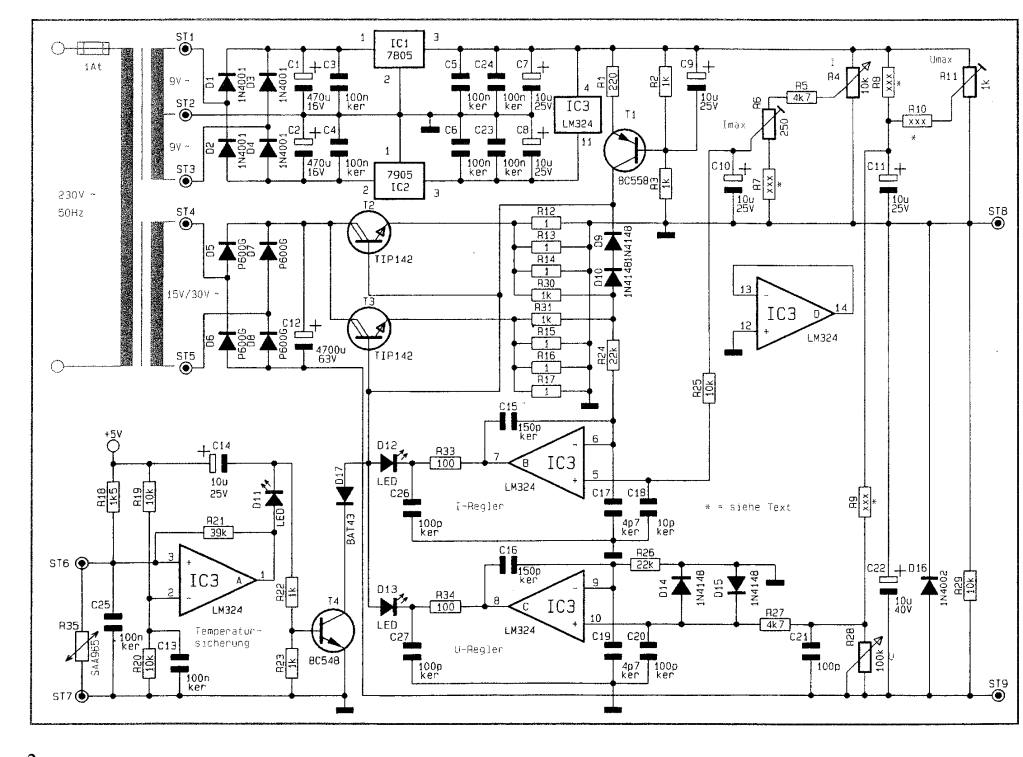[/size]LED D13 is on, when the power supply operates in constant voltage mode. (In this case you controll the output voltage. The current is only limited by the load or the capatibilities of the supply)This led should be on, even if you have connected a load or not.LED D12 is on, when the power supply operates in constant current mode. (In this case, you controll the current which flows to your load)This led is on, when you have connected a load, and reduce the current with the current controlThis LED also indicates, when you want to draw more current than possible.
[/color][/size][/font][/size]
Thanks for the reply. So D13 is on when I am in constant voltage mode. I can adjust the voltage all the way up from 0 - 30v and the light should be on regardless of load or no load. D12 is on when the current limiting has come into play. If I lower the current level with the pot, it should come on when I reach that value. I.E., if I connect a load that will pull 1A and I have my current limit set to 500mA, the supply will only allow 500mA to flow, and the led will light indicating that it is actually limiting current. Is all that right? To clarify, is the current function constant current, or current limit? I mean, will the supply only cap the max amount of current allowed, or will it try and supply the designated current continuously and change the voltage to make that happen(within the limits of the supply)?
[/size][/font]
For the troubleshooting:[/color][/size][/font]
[/size]What's the voltage at C12?What's the voltage at C7?What's the voltage at C8?Have you chosen the right resistors from "Tabelle 2" ?Which resistors have you used as R30 / R31 ?
The voltage at across C12 is 43V
Voltage across C7 and C8 are 5V, giving me a 10V split supply for the op amp.
I have chosen the resistors from Table 2 based on the 30V/2A version and have checked that the values are correct. Just to make sure, do Germans use commas instead of periods for decimals? For instance, for R8 it says to use 6,8k. I am assuming that this equates to 6.8k but just wanted to make sure.
Before I wasted any more of someone's time, I went through with the schematic and highlighted each connection after ensuring that it was correct. I found 2 or so problems and corrected them. I am not absolutely, positively guaranteeing that there are no errors, but am pretty sure there is not. Here is the problem now. D12 is constantly lit, and the voltage adjustment no longer works. I can vary the voltage from -0.5v to -150mV . Turning the current adjust pots do not do anything except the trimpot(R6), when I bring it do the far end of its travel on one side it dims D12 to about half of what it was. What could cause this? A fried component, an incorrect setup,...??
The current source(R1,2,3; and the transistor) is sourcing ~8mA but I guess it is all being sunk through D12? Also, I traded out the TIP142's just to make sure that they weren't blown or anything.
Here is my somewhat vague understanding of the circuit. The current source supplies a constant current of ~8mA to the bases of the pass transistors. If/when the voltage or current needs regulating, the op-amp sinks some of this 8mA to itself, effectively 'stealing' the current from the transistors. I have a couple of (possibly silly/stupid) questions. I understand how to use a transistor as a current source(as used in this circuit), but I don't understand how the change in base current of the transistors can change the voltage. Also, how does the op amp know how much current is flowing, in order to regulate it. One more: Based on my(very limited) op amp knowledge, the op amp has to have some sort of feedback, otherwise a few nV difference between the 2 inputs would make it swing immediately to the respective power rail. How are the two op amps getting their feedback? Could someone recommend some reading material on the subjects. I could not find anything to help me understand these things.
Thanks so much,
Joshua
P.S. here is another copy of the schematic so you don't have to go to page 1

